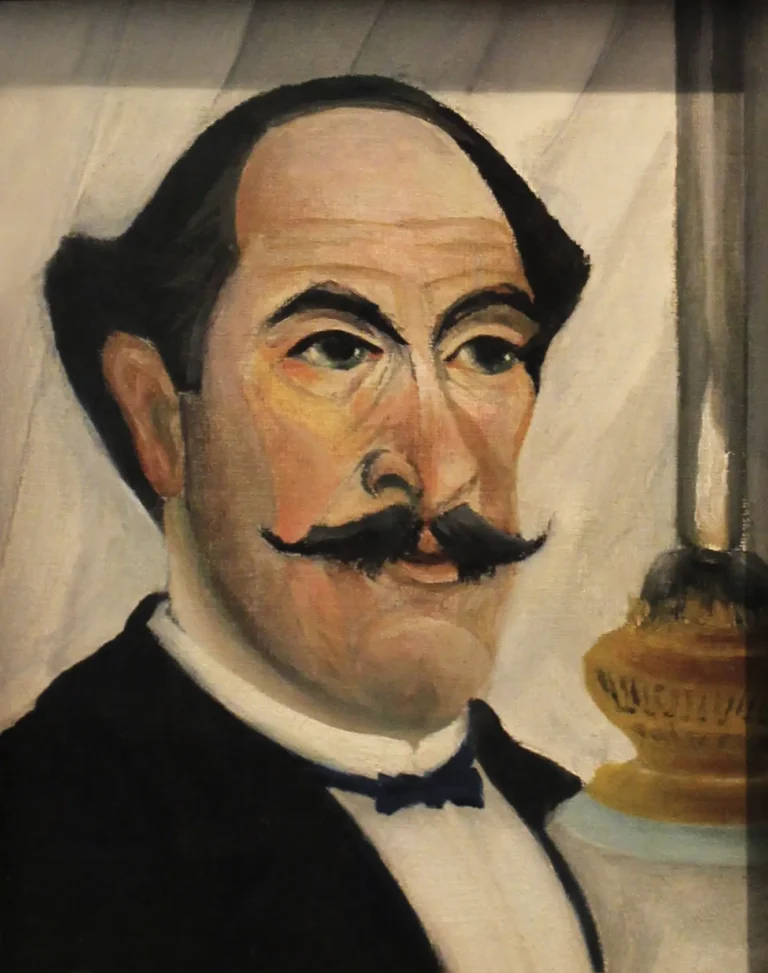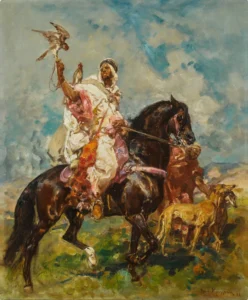Self-Portrait of the Artist with a Lamp (1903)
Created in 1903, Self-Portrait of the Artist with a Lamp is an oil on canvas work by French artist Henri Rousseau, measuring just 23 cm by 19 cm. This delightful self-portrait shows Rousseau holding a lamp, embodying his distinctive sweet naivety and rich imagination. As a Post-Impressionist artist largely outside conventional movements, his skill for merging realism with fantastical elements is on full display, reinforcing his vital role in modern art history and enhancing the appreciation of his legacy.
Year 1903
About the Artwork
Henri Rousseau, a largely self-taught artist, created Self-Portrait of the Artist with a Lamp as a reflection of his own whimsical vision and identity. Painted in 1903, at a time when Rousseau was beginning to gain recognition in the art world, this work serves as a moment of introspection. Portraying himself holding a lamp, Rousseau’s style exudes a simplistic charm that eschews overly complex forms yet captivates viewers with its nostalgic warmth. His naive style, emblematic of his personality, invites discussion about the purity of perception in art. This piece not only frames Rousseau’s commitment to his craft but also highlights the autobiographical elements that Kelly suggests he used to navigate his way through the often critical art circles of his time. As an artefact of the Post-Impressionist movement, it speaks to Rousseau's ability to transcend conventional boundaries and evoke human emotion through sincere, personal narrative.
Did You Know
Henri Rousseau, unlike many artists of his time, did not receive formal art training. His self-taught approach allowed him to develop a distinctive style that was personal and distinctive, setting him apart from his contemporaries.
Rousseau’s naive style and dreamlike compositions influenced later art movements, particularly Surrealism. Artists such as André Breton recognized Rousseau’s unique visualization of fantasy and reality, which laid the groundwork for their explorations.
Despite facing significant criticism and skepticism from the art community during his lifetime, Rousseau’s relentless creativity and commitment to his vision have made him a symbol of artistic persistence and authenticity, inspiring countless artists across generations.









